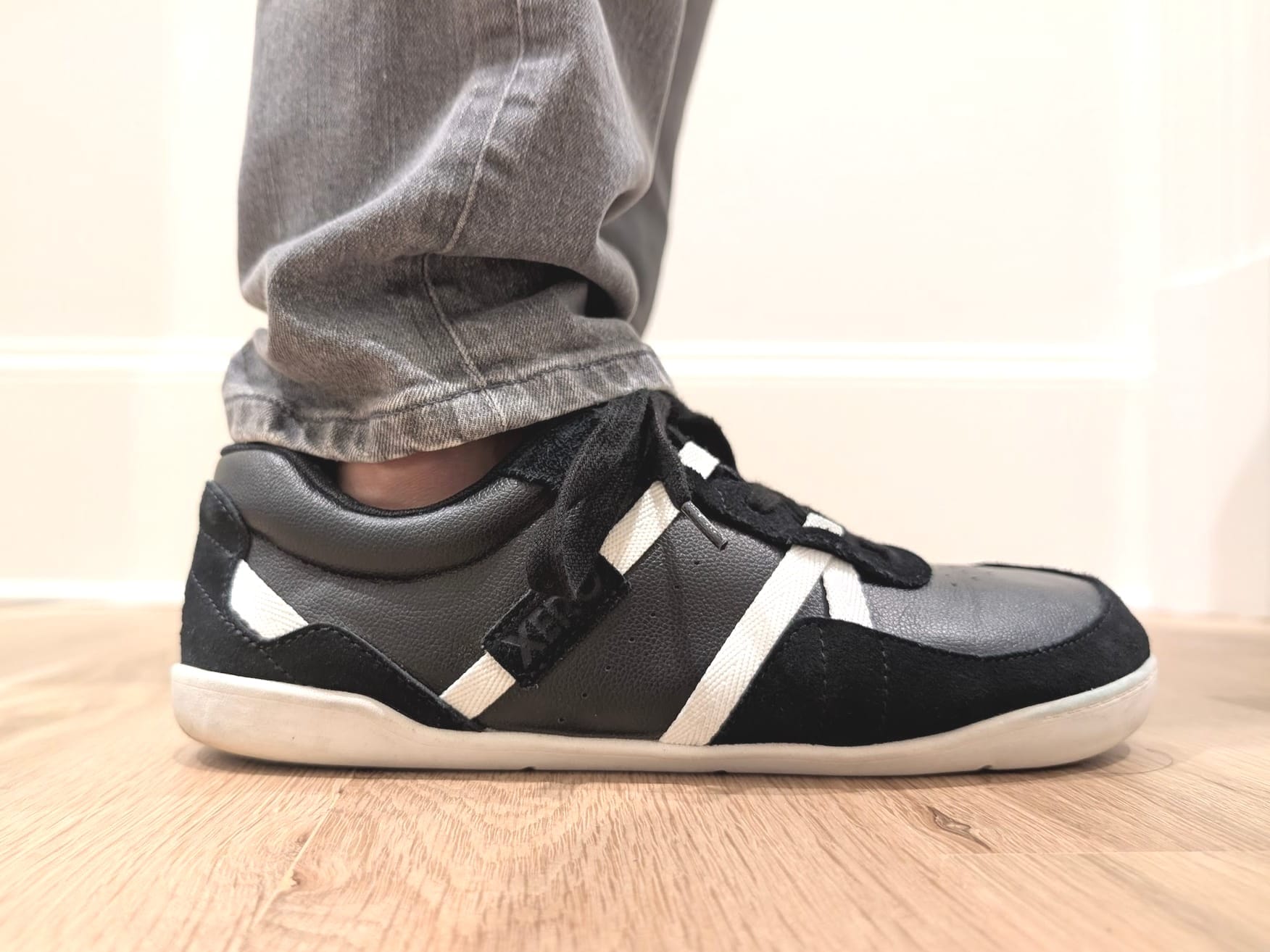Barefoot Running Ultramarathons: Possible? Of course!
Jason Robillard discusses the advantages (and disadvantages) to barefoot running (or minimalist shoes running) an ultramarathon -- things like moisture control, proprioception, and injury prevention!

Guest post by Jason Robillard, author and founder of the Barefoot Running University
Running ultramarathons ... barefoot? Is that even possible? Of course! Not only is it possible, I think it can give a runner a discernible advantage. Okay, so maybe you won't have to go completely barefoot. A good minimalist shoe may work just fine.
I'm a barefoot ultramarathon runner. I do wear minimalist shoes on occasion when conditions warrant. I ran a 100 mile ultra in September of 2009 (Hallucination 100 in Pinckney, Michigan) wearing a pair of Vibram KSOs. I've run a 50 miler barefoot and another in aqua socks (North Country Trail Run in Manistee, Michigan) I also teach people about barefoot and minimalist shoe running.
Okay, so you're ready to take the plunge. You decide you'd like to try one of these ultramarathons. If you are a barefoot or minimalist shoe runner, this likely causes a little trepidation. How do you prepare for such a long distance with so little protection on your feet? What variables will your footwear decisions affect?
Barefoot or minimalist shoe running at the ultramarathon distance has some distinct advantages over shod running.
Many people begin running barefoot or in minimalist shoes to prevent injury, but running barefoot or in minimalist shoes to reduce injury holds true at the ultra level, also. By losing my shoes, I am able to train longer and faster (relatively speaking, of course). During races, I experience less pain than I do in shoes. The soft, relaxed, and gentle glide of my barefoot gait produces less wear and tear on my feet and body than the heel-pounding of shod running. As the miles add up, the difference in cumulative damage becomes clear.
Running barefoot or in minimalist shoes also increases proprioception, which is your body's awareness of where every body part is at. This heightened awareness reduces the likelihood of injuries like twisted ankles and resulting falls. If you step on uneven terrain barefoot, your body instantly adjusts. Comparatively, shod runners (with an inch of rubber under their soles) just crumple to the ground in a pile of stretched and torn tendons and ligaments.
Barefoot or minimalist shoe running will also reduce fatigue. Simply put, you will have less weight on your feet. That can be significant after 30, 50, or 100 miles. My 8 ounce Terra Plana EVOs or Vibram KSOs are significantly lighter than 24 ounce Brooks Cascadias.
Moisture is always a problem for ultrarunners. Feet get moist from sweat, rain, or water crossings. Ultrarunners become experts at warding off moisture. We use creams, lubes, and powders. We change socks and shoes on a regular basis—unless we are barefoot. No matter how many water crossings you encounter, your feet will be bone-dry within a minute or two.
Once moisture is controlled, another common problem is eliminated: blisters. While blisters are a common occurrence for many as they transition to barefoot running, they are rare once good form is developed. This is especially true on trails. Even in my barefoot 50 miler, I did not develop a single hot spot or blister.
Finally, barefoot or minimalist shoe running teaches what I call "trailcraft." Running trails is a form of art. It takes a special skill set that can only be developed with time. Long-time trail runners will agree; the skills needed to traverse hills, roots, rocks, mud, and the litany of other obstacles found on trails takes some time to develop. Running barefoot greatly increases the speed of that learning curve. Simply put, barefoot runners must rely on watching the trail and immediately identifying potentially dangerous obstacles. We must rely on our tactile sense to allow our feet to "melt" over small debris (thank you to Jesse Scott for that analogy). In the later stages of an ultra, those trail "instincts" are invaluable skills that will ultimately help us reach the finish line.
Special considerations for the barefoot ultramarathon runner
Of course, there are some potential problems with barefoot or minimalist ultramarathons. Focus cannot waver. One misplaced step could result in injury. There is an increased danger of puncture wounds from debris on the trail. Likewise, there is an increased danger of stubbing toes on roots or rocks. Extreme temperatures can be problematic. Luckily, training and preparation can eliminate all of these problems.
There are a few other considerations. If you decide to wear minimalist shoes, which type do you choose? Most shoes will provide varying degrees of protection, traction, and "ground feel." In most cases, as traction and protection increases, ground feel decreases. In most situations, I prefer greater ground feel over traction and protection. Skilled trailcraft can eliminate the need for excessive protection and traction. My preferred shoes are Vibram's KSOs or Terra Plana's EVO.
Hills can sometimes be problematic, especially as the miles pile up. Using a midfoot strike on flat ground or uphill is great! Running down hill isn’t as simple. Using a midfoot strike when going down hill applies excessive stress to the front of the knee, which results in pain directly below the patella. The solution for me is simple. I use what could best be described as a downhill mogul ski technique. I take small steps with my feet pointing at a 45° angle to the bottom. I take a few steps, then alternate the direction my feet are pointing from left to right. This technique distributes the workload enough to dramatically decrease the knee pain.
Finally, knowledge of the course is critical. know the trail conditions. In training, try to mimic those conditions as closely as possible. If you have access to the actual course, train on that. This will familiarize yourself with major obstacles and condition your feet for that particular race.
If you want to learn more about barefoot ultra running, there are many resources available for free on the 'Web:
- To find races, check out my own ultramarathon calendars or Ultrarunning Magazine's calendar
- For general ultramarathon advice, check out Kevin Sayers' ultrunr.com or Stan Jensen's sites
- Take a look at my site for general barefoot running information or Ken Bob Saxton's site
- If you prefer information in printed form, check out my barefoot running book
- Finally, don't miss the newly-formed Barefoot Runners Society, due to launch in late March.
A video showing Jason running hills and gravel trails barefoot
Below is some real-time and slow motion trail hill running (up and down) video from Jason to help demonstrate the "downhill mogul ski technique:"

About Jason Robillard
Jason Robillard has been a serious barefoot runner since 2005 and runs up to 100 miles a week. The author of The Barefoot Running Book and Barefoot and Ultramarathon Ramblings and founder of the Barefoot Running University, you'll find Jason around the web whereever barefoot running is being discussed — he often goes by humble and humorous moniker "Last Place Jason."
Thank you, Jason, for taking the time to share your experiences barefoot running ultramarathons!




